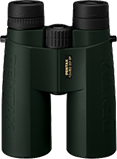Dicots
Class Magnoliopsida
Overview • Description • Distribution • Taxonomy
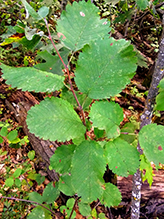
Overview
Magnoliopsida is the class encompassing the dicotyledons. Dicots is both the common name of the class and a shortened word for dicotyledons.
Magnoliopsida is the largest group of flowering plants on Earth, with approximately 199,000 species in about 325 families worldwide. They make up about 75% of all flowering plant species.
Magnoliopsida is the traditional classification for this group, widely adopted from the Cronquist system. In modern, DNA-based plant classification (the Angiosperm Phylogeny Group, or APG), the same group of plants is largely referred to as the Eudicots. However, databases that rely on a formal rank hierarchy, such as ITIS, GBIF, and the USDA PLANTS Database, continue to use Class Magnoliopsida to maintain rank stability and consistency across their vast catalogs. The name Magnoliidae is often reserved as a Subclass or an unranked clade in these newer, phylogenetically informed systems.
Description
Class Magnoliopsida (Dicots) include both herbaceous and woody plants. They are named for having seeds that usually develop with two cotyledons (embryonic seed leaves), which form the first leaves of the seedling.
The stems usually have vascular tissues either in a ring of small bundles or in what appears in cross section as a cylinder. In non-woody species, this cylinder usually encloses a soft spongy tissue, the pith. The stems have true secondary growth, meaning that the vascular tissue produces secondary xylem (wood) inwards, towards the pith, and secondary phloem outwards, towards the bark.
The leaves usually have branching veins, and the veins form a web-like pattern across the leaf blade.
Flower parts—including sepals, petals, and stamens—are usually arranged in multiples of four or five.
Finally, the group’s most defining feature is that the pollen grains typically have three furrows or pores (tricolpate).
Distribution |
||
|
Sources 2, 3, 5, 7, 8, 24, 28, 29, 30. Biodiversity occurrence data published by: Minnesota Biodiversity Atlas (accessed through the Minnesota Biodiversity Atlas Portal, bellatlas.umn.edu, 11/22/2025). |
|
| 11/22/2025 | ||
Taxonomy
Kingdom
Division
Tracheophyta (Vascular Plants)
Subdivision
Spermatophytina (Seed Plants)
Subordinate Taxa
Order Amborellales (Amborellas)
Order Apiales (Carrots, Ivies, and Allies)
Order Aquifoliales (Hollies and Allies)
Order Asterales (Sunflowers, Bellflowers, Fanflowers, and Allies)
Order Austrobaileyales (Austrobaileya, Anises, and Allies)
Order Berberidopsidales (Tape-vines, Olivillo, and Allies)
Order Boraginales (Borages)
Order Brassicales (Mustards, Capers, and Allies)
Order Bruniales (Blacktips, Columellias, and Allies)
Order Buxales (Boxes and Pachysandras)
Order Canellales (Canellas, Winter's-bark, and Allies)
Order Caryophyllales (Pinks, Cactuses, and Allies)
Order Celastrales (Staff-vines and Allies)
Order Ceratophyllales (Coontails)
Order Chloranthales
Order Cornales (Dogwoods, Hydrangeas, and Allies)
Order Crossosomatales (Rockflowers, Bladdernuts, and Allies)
Order Cucurbitales (Begonias, Gourds, and Allies)
Order Dilleniales (Guinea-flowers and Allies)
Order Dipsacales (Honeysuckles, Moschatels, and Allies)
Order Ericales (Heathers, Balsams, Primroses, and Allies)
Order Escalloniales
Order Fabales (Legumes, Milkworts, and Allies)
Order Fagales (Beeches, Oaks, Walnuts, and Allies)
Order Garryales (Silktassels and Gutta-Percha)
Order Gentianales (Gentians, Dogbanes, Madders, and Allies)
Order Geraniales (Geraniums, Bridal Wreaths, and Allies)
Order Gunnerales (Gunneras and Resurrection Plants)
Order Huerteales (Dipentodon, Gerrardina, Petenaea, Tapiscia and Allies)
Order Icacinales (Icacina, Oncotheca and Allies)
Order Lamiales (Mints, Plantains, Olives, and Allies)
Order Laurales (Laurels, Spicebushes, and Allies)
Order Magnoliales (Magnolias, Nutmegs, and Allies)
Order Malpighiales (Nances, Willows, and Allies)
Order Malvales (Mallows, Rock-roses, and Allies)
Order Metteniusales (Metteniusas and Allies)
Order Myrtales (Myrtles, Evening Primroses, and Allies)
Order Nymphaeales (Waterlilies, Fanworts, and Allies)
Order Oxalidales (Woodsorrels, Quandongs, and Allies)
Order Paracryphiales
Order Picramniales
Order Piperales (Pepper Plants, Birthworts, and Allies)
Order Proteales (Proteas, Lotuses, Planes, and Allies)
Order Ranunculales (Buttercups, Poppies, and Allies)
Order Rosales (Roses, Elms, Figs, and Allies)
Order Santalales (Sandalwoods, Mistletoes, and Allies)
Order Sapindales (Soapberries, Cashews, Mahoganies, and Allies)
Order Saxifragales (Saxifrages, Stonecrops, and Allies)
Order Solanales (Nightshades, Bindweeds, Gooseweeds, and Allies)
Order Trochodendrales (Cartwheel Trees and Tetracentrons)
Order Vahliales (Vahlia and Allies)
Order Vitales (Grapes and Allies)
Order Zygophyllales (Caltrops and Ratanies)
Synonyms
Eudicotidae
Eudicotyledonae
Eudicotyledons
Common Names
Dicots
Dicotyledons
Eidicots
Visitor Photos
Share your photo of this plant.
This button not working for you?
Simply email us at info@MinnesotaSeasons.com.
Attach one or more photos and, if you like, a caption.
Luciearl |
||
Discovered this at the end of the season and none that were full grown, but will look for more in the spring. I'm not sure on the ID, but after looking on Minnesota Wildflowers and Trees and Shrubs of Minnesota, I think it is bog birch, almost a round leaf with scallops. |
||
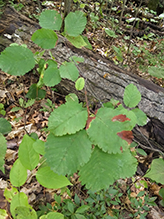 |
 |
|
This plant popped up in the backyard a restaurant during the drought 2021. The drought was so bad we let anything grow even though (invasive) not sure if it was good or bad. |
||
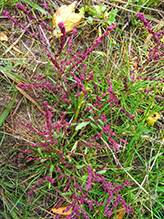 |
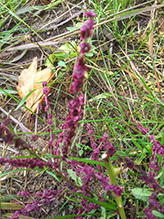 |
|
 |
||
Alfredo Colon |
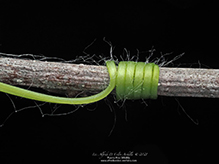 |
MinnesotaSeasons.com Photos
|

Slideshows

Visitor Videos
Share your video of this plant.
This button not working for you?
Simply email us at info@MinnesotaSeasons.com.
Attach a video, a YouTube link, or a cloud storage link.
Other Videos

Visitor Sightings
Report a sighting of this plant.
This button not working for you?
Simply email us at info@MinnesotaSeasons.com.
Be sure to include a location.
Luciearl
Sept. 2021

Location: Fairview Twp, Cass County
Discovered this at the end of the season and none that were full grown, but will look for more in the spring. I'm not sure on the ID, but after looking on Minnesota Wildflowers and Trees and Shrubs of Minnesota, I think it is bog birch, almost a round leaf with scallops.
MinnesotaSeasons.com Sightings
